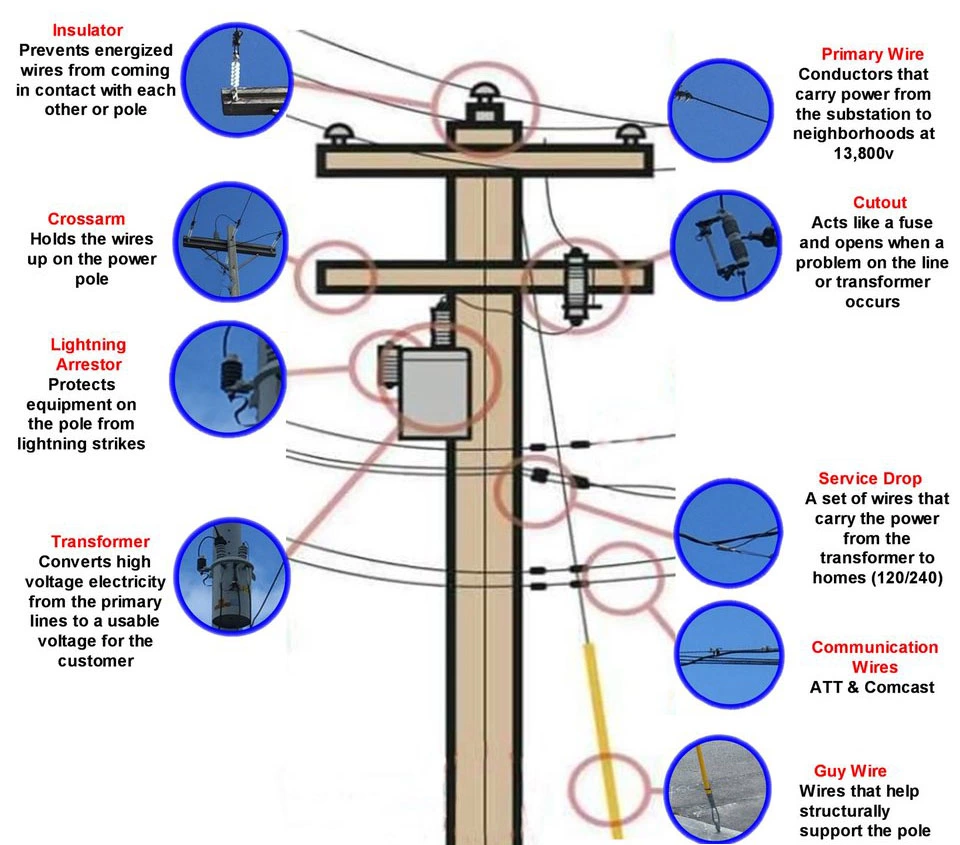What is on an Electric Power Pole?
The main features of an electric power pole can be divided into 3 categories: a) Wires and cables; b) Hardware; and c) Safety features.
1. Wires & Cables
Utility power poles often accommodate numerous cables and wires. The main groups of lines on electrical poles are:
- Static Lines: This includes a static wire (used to divert lightning surges), and a neutral line or multi-grounded neutral (MGN) which provides a return path for the electrical current;
- Transmission Lines: These can be further divided into primary lines, which carry the highest voltage, and secondary lines, carrying power which has already undergone a service drop;
- Telecommunication Lines: e.g. those for telephone and internet connection;
- Guy lines: Those which connect the pole to the foundational level.
2. Utility pole hardware
Hardware is the term used to describe the various pieces of equipment which are essential in ensuring the efficient functioning of power poles, such as bolts, hooks, pole clamps , power fittings, nuts, washers, cross arms, and assemblies.
Pole hardware has many important purposes, including (but not limited to):
- Providing structural and safety support to the pole;
- Assisting with power conversion and transmission;
- Facilitating guying and wiring requirements.
Wooden poles can be pre-drilled to accommodate hardware parts fairly easily. Steel poles can be manufactured with built-in grooves for the same purpose; on-site drilling is also an option, as is the welding of parts.
However, for poles crafted from concrete drilling is not an option. Hardware can only be cast into the pole during its manufacture – not an easy process.
Because the drilling, welding, and casting of steel and concrete poles can be expensive, time-consuming, and/or hazardous, externally banded hardware has become a more popular method for attaching hardware to utility poles.
3. Safety Features
Utility poles incorporate numerous safety features designed to prevent a range of dangerous occurrences. Some of the most common safety features on power poles include:
- Static wire: runs across the very top. It helps to shield the pole from lightning damage by absorbing any excess electrical current resulting from a lightning strike;
- Grounding rods : A wire connects the static wire to a grounding rod at the foundation, which channels any lightning-induced voltage safely into the earth;
- Transformers: Convert raw, high voltage electricity into levels that are safe for regular everyday use;
- Fuse cut-outs: Accommodate the primary wire from the transformer, and act as a visual ‘warning signal’ if the transformer becomes overloaded;
- Insulators: Protect live components from coming into contact with each other (aerial bundled conductors also help to prevent wildfires using a similar method).

